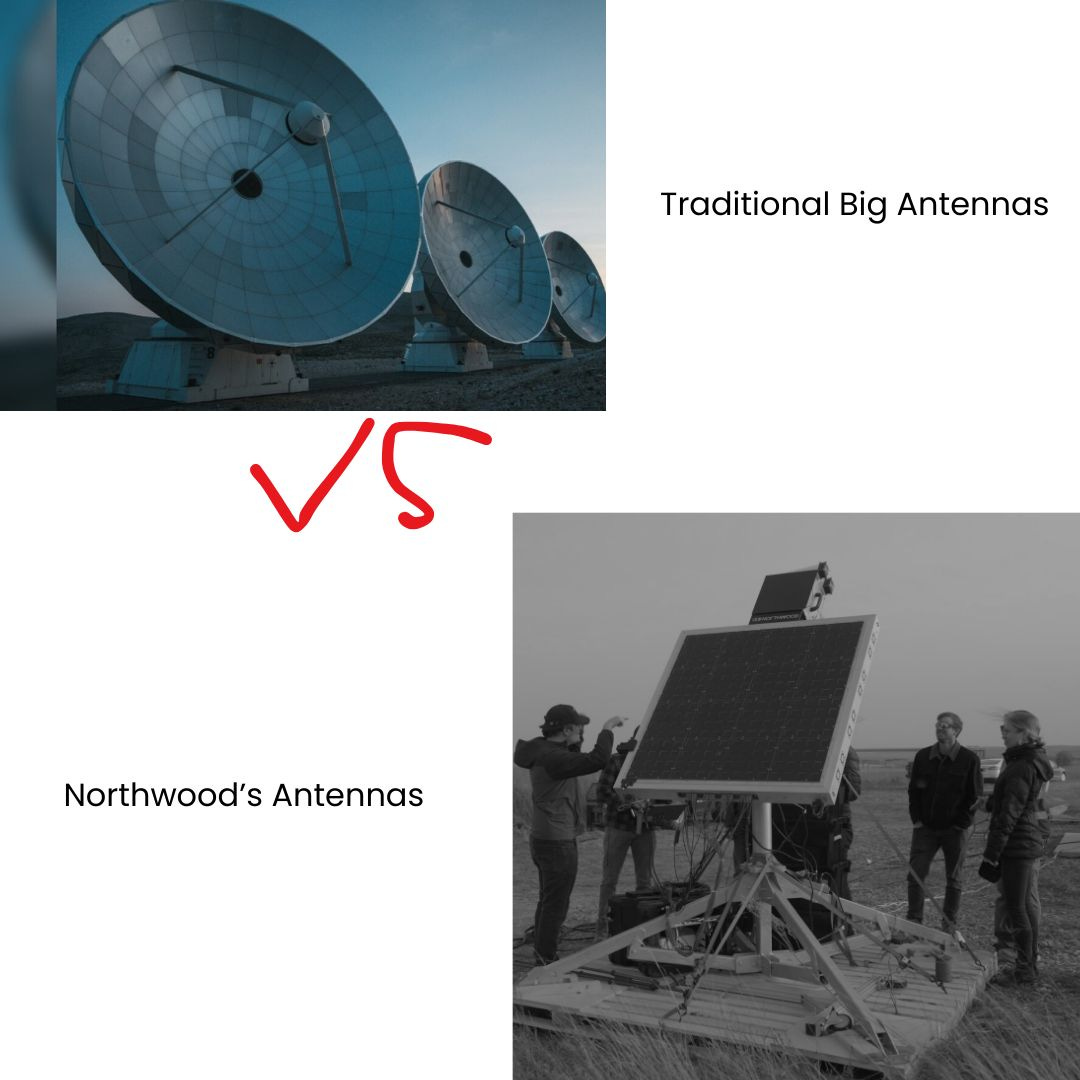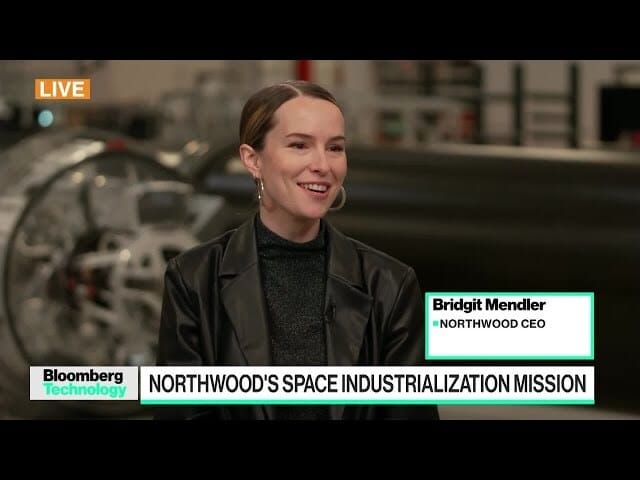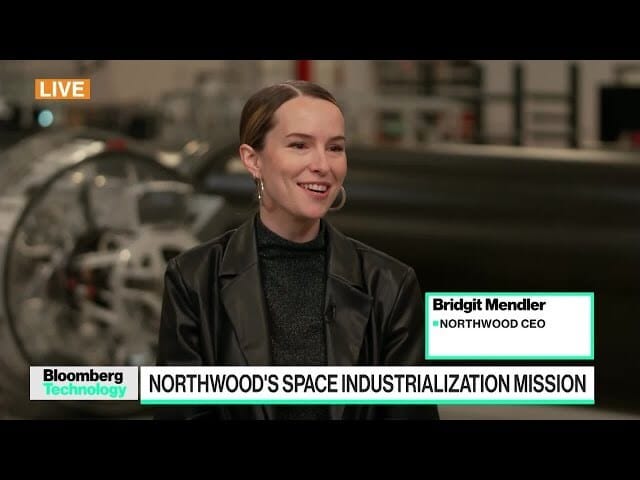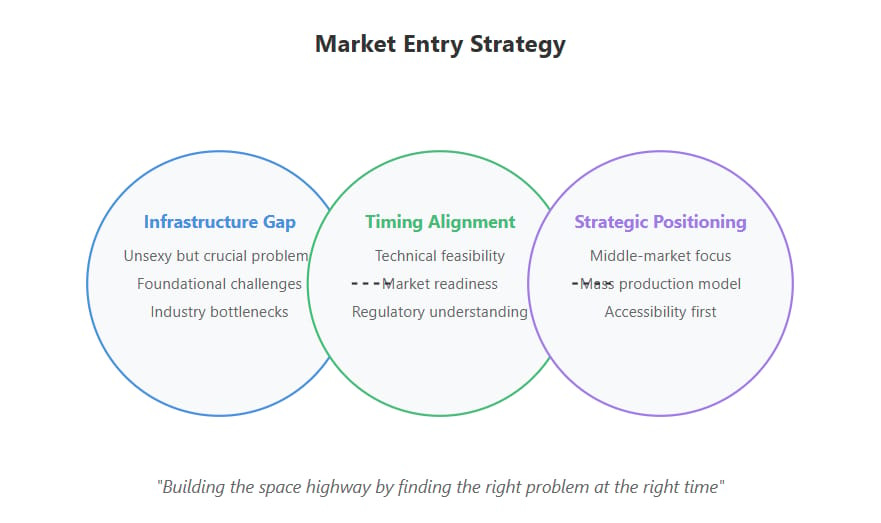From Disney to Space: Bridgit Mendler and Northwood
How a Former Child Star is Building Earth's Space Highway
TLDR
Former Disney star turned MIT PhD student Bridgit Mendler has raised $6.3M in seed funding for Northwood Space, a startup revolutionizing satellite ground infrastructure. While others chase satellite launches, Mendler focuses on the overlooked foundation: building the "data highway" between Earth and space. And we are focusing on how she is leading the growth.
What’s To Come In This Issue:
How an actress became a space infrastructure founder
Space opportunities exist on the earth too
The evolution from Home Depot experiments to venture-backed startup
Analysis of space infrastructure as the next frontier
Key insights into timing and market positioning
Once Upon A Time, In Home Depot
Sometimes you come across a story that makes you inspired and anxious at the same time. Bridgit Mendler’s story is just like that. You read her transformation story in awe, you think how much can be achieved in a lifetime, and you end up questioning your own life.

From the clutchpoints article
But let’s rewind to covid lockdowns. While most of us were busy making sourdough and binging all the TV shows ever made, Bridgit was in New Hampshire building satellite antennas from parts she found at Home Depot.
This isn’t a typical hobby turned into a career story. At 31, Mendler had already lived several lives: Disney star, recording artist, USC graduate, MIT Media Lab researcher, and Harvard Law student. But in those early pandemic days, tinkering with makeshift antennas, she stumbled upon what would become her next chapter: building the infrastructure for space communication.
She wasn’t just experimenting, she was discovering the seeds of something bigger.
The Ground Game
The space industry has a blind spot. While billions pour into launching satellites and building rockets, the fundamental infrastructure connecting Earth to space hasn't evolved since the 1960s. The current system is like having an information superhighway in the sky, but dirt roads on the ground.
SpaceX and several others are leading a revolution in the skies, but no one is actually looking down at the Earth. You can’t break through in space if you can’t communicate with the earth.

The numbers tell the story:
Traditional ground stations cost over $1 billion
Custom manufacturing leads to frequent failures
Growing satellite launches create communication bottlenecks
Limited infrastructure restricts space industry growth
This is where Mendler spotted her opportunity. Instead of joining the space race upward, she decided to solve the problem on the ground.
From Star to Startup
Mendler's path to space infrastructure wasn't linear, but it wasn't random either. Each step built crucial understanding:

USC anthropology: studying how humans build and use systems
MIT Media Lab: exploring technology's impact on society
Harvard Law: understanding space law and regulation
FCC: diving deep into space communication policy
The pivotal moment came during her time at the FCC in 2022. "I completely fell in love with space law," she told CNBC. This wasn't just academic interest - it was market insight.
Building The Space Highway
Northwood Space's approach is fundamentally different from traditional space infrastructure. Instead of custom-built, billion-dollar ground stations (which are mostly for governmental use), they're developing advanced phased array antennas that can be mass-produced.
The technology tells only half the story. The real innovation is in the business model. Their satellite systems are;
More capable than consumer technology
More affordable than government systems
This positioning isn't just about price - it's about democratizing space access. Like how SpaceX paved the way for private space companies, Northwood aims the same for the ground.
Market Timing
The timing of Northwood's emergence is crucial. Three key factors converge:
Infrastructure Gap
Satellite launches outpacing ground capacity
Communication blackouts becoming common
Traditional infrastructure showing its age
Technology Maturity
Phased array technology becoming viable
Digital beam steering advancing
Manufacturing costs decreasing
Regulatory Understanding
Space law evolution
FCC's growing role
Infrastructure regulations adapting
The $6.3M Bet
Northwood raised $6.3 million in seed funding from venture capital firms like Andreessen Horowitz and Founders Fund recently. While others chase the glamorous aspects of space, Mendler and her team recognized that the real opportunity lies in the unglamorous infrastructure.
“For me, why the ground-side matters is because it actually is about bringing the impacts of space home to people.”
Bridgit Mendler
This focus on practical impact over hype reflects a deeper understanding of how infrastructure drives innovation. Just as telegraph networks enabled real-time journalism and stock trading, reliable space communication could enable the next wave of human progress.
The Founder's Edge
What makes Northwood's story particularly interesting is how Mendler is leveraging her unique background in their go-to-market strategy. Instead of hiding from her entertainment past, she's using it to differentiate Northwood in a crowded space industry.
When most space startups lead with technical specifications, Mendler leads with vision and accessibility. Her communication style, honed through years in entertainment and refined in academia, makes complex space infrastructure digestible to a broader audience.

Chief Technology Officer Griffin Cleverly, CEO Bridgit Mendler and Head of Software Shaurya Luthra.
Through her public statements and interviews, we can see a clear positioning strategy:
Relatable Innovation
Using the Home Depot antenna story
Making space infrastructure tangible
Connecting ground stations to everyday impact
Credibility Stacking
Entertainment success showing adaptability
Academic credentials establishing expertise
Legal background demonstrating regulatory insight
FCC experience proving industry knowledge
Vision Communication
Clear "data highway" metaphor
Focus on Earth’s impact over space excitement
Emphasis on democratizing access
Growth Strategy
Northwood's approach to growth appears to follow three key principles:
Institutional First
$6.3M seed from institutional investors
Focus on industry credibility
Strategic announcements and timing
Narrative Control
Clear, consistent messaging
Strategic use of Mendler's profile
Focus on infrastructure story
Market Education
Emphasis on ground infrastructure importance
Clear problem-solution framing
Accessible technical explanations
This approach stands out in an industry often characterized by highly technical or overly promotional communication. Mendler is threading the needle between credibility and accessibility, using her unique background as an asset rather than a liability.
Building a Different Kind of Space Company
Unlike typical space founders who come from aerospace or traditional tech, Mendler's multi-disciplinary background is shaping a different kind of growth story.
The Communication Advantage
The space industry suffers from a communication problem. Most companies either speak in highly technical jargon or resort to sci-fi level hype. Mendler's approach is refreshingly different:

"While everybody else was making their sourdough starters, we were building antennas out of random crap we could find at Home Depot."
This isn't just a cute origin story. It's a deliberate positioning that makes complex space infrastructure relatable to investors, customers, and potential talent.
Growth Through Education
Northwood's communication strategy shows clear patterns:

The Future Playbook
Looking at Mendler's public statements and company materials, we can see a clear growth strategy emerging:
Market Development
Educating about ground infrastructure importance
Building industry partnerships
Creating new market categories
Technology Evolution
Phased array advancement
Mass production capabilities
Multi-satellite tracking
Impact Scaling
Environmental monitoring
Global security applications
Healthcare and education access
The Founder-Led Advantage
What makes Northwood's strategy particularly interesting is Mendler's unique ability to leverage her diverse background. Her journey through entertainment has given her rare storytelling expertise, while her academic research at MIT has instilled analytical rigor, and her legal studies have provided deep regulatory understanding.
This multi-disciplinary foundation enables her to operate at a unique communication scale - she can explain complex technical concepts to investors in the morning, discuss regulatory frameworks with government officials in the afternoon, and share the company's vision with the public in the evening.

Moreover, her credentials form a powerful credibility matrix: technical depth from MIT, regulatory insight from her FCC experience, and industry knowledge from Harvard Law.
It's this rare combination that allows Northwood to bridge the gap between complex space technology and its practical impact on Earth, making the abstract concept of space infrastructure tangible and relevant to multiple stakeholders.
The Bigger Picture
What's emerging isn't just another space company - it's a new model for founder-led growth in deep tech. Mendler is proving that in an industry dominated by technical founders, the ability to communicate vision and build bridges between disciplines might be just as valuable as traditional aerospace experience.
As she told CNBC, "For me, why the ground-side matters is because it actually is about bringing the impacts of space home to people."
This isn't just marketing - it's a fundamental understanding that the next space race won't be won just on technical merit but on the ability to make space infrastructure accessible and relevant to everyday life.
Key Lessons for Founders
The Northwood Space story offers valuable insights for founders, particularly those bridging different industries or bringing unconventional backgrounds to technical fields.
The Multi-Background Advantage
Turn Perceived Weaknesses into Strengths
Mendler didn't hide her entertainment background
Used communication skills as differentiation
Leveraged diverse experience for unique insights
Credibility Building
Systematic skill acquisition (MIT, Harvard Law)
Strategic role choices (FCC, space law)
Clear expertise demonstration
Vision Communication
Making complex topics accessible
Using relatable metaphors
Connecting technical solutions to human impact
Market Entry Strategy
Key principles from Northwood's approach:

Growth Framework
Northwood's playbook reveals a systematic approach. It is actually similar to their communication approach, which means communication leads the growth in founder-led brands.
Northwood's growth playbook starts with rigorous problem education - they don't just explain the challenge of ground infrastructure, they demonstrate its market size and visualize its impact on everyday life.

This foundation of understanding then flows into establishing solution credibility, proven through their technical capabilities, validated by $6.3M in seed funding, and reinforced through industry recognition.
But what truly sets their approach apart is how they scale their vision: they've articulated a clear long-term mission that extends beyond just building better antennas, identifying multiple application areas from environmental monitoring to global security, and painting a picture of potential global impact that makes their infrastructure play feel less like a technical solution and more like a crucial step in humanity's space future.
Final Thoughts: A New Kind of Founder
Perhaps the most important lesson from Mendler's journey is that there isn't one path to entrepreneurship. In an industry dominated by traditional technical founders, she's showing how diverse backgrounds and strong communication skills can be crucial advantages.
The key is turning your unique background into an asset rather than trying to fit a predetermined mold. As space becomes increasingly important to everyday life, we'll need more founders who can bridge technical innovation with human understanding.
As Mendler demonstrates, sometimes the best preparation for solving complex technical problems isn't just technical expertise - it's the ability to see patterns across disciplines and communicate solutions in ways that resonate with both experts and everyday people.
See you next week,
BA




